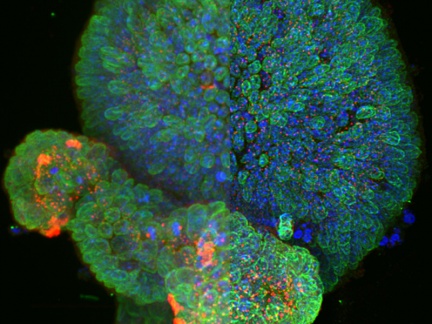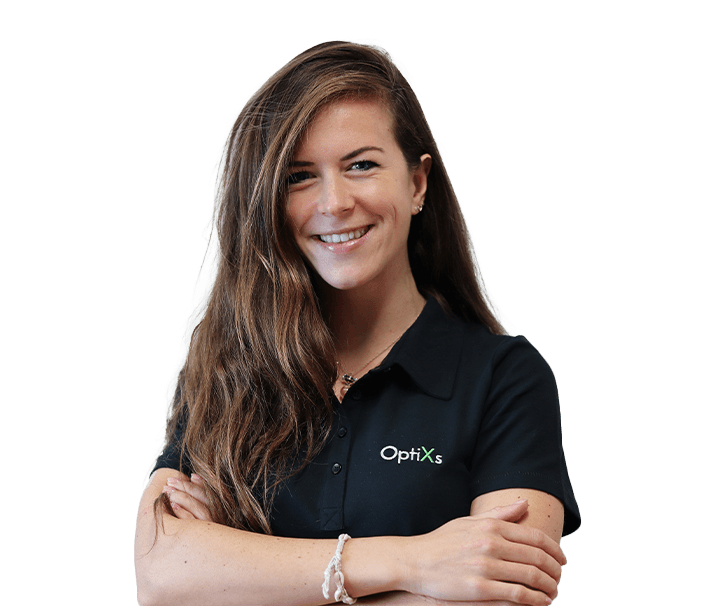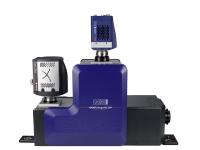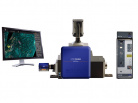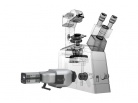Deconvolution in microscopy is a widespread method for image data processing. The microscope introduces a certain defect (PSF - convolution) into the acquired data during imaging. Deconvolution algorithms work with its parameters and correct the output data to obtain a higher resolution image that better represents the object under study.
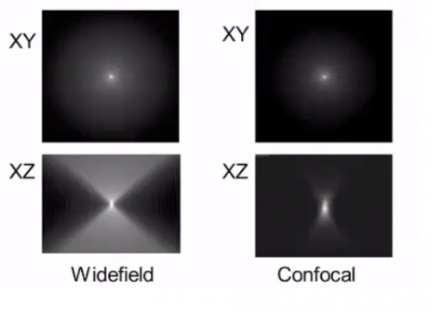
Figure 1: PSF(point spread function) obtained by imaging a point object with a fluorescence microscope(Widefield) and a confocal microscope(Confocal). The distortion of the point object image was caused by the convolution process.
The pointspread function(PSF ) represents the information obtained from the microscope when imaging a pointsource object. The size and shape of the PSF depends on the parameters of the components through which the signal passes, the refractive indices(n) of all the media, and the method used (see Figure 1).
There are many different deconvolution algorithms that are applied to microscope data (see table). All of them work with the image after convolution and their output is a more or less high-quality reproduction of the real object.
| Algorithm | Speed | Quantitative | Requires PSF | Produces PSF | S/N | Noise |
|---|---|---|---|---|---|---|
| No/Nearest - neighbour | Quick | No | No | No | Lower | Higher |
| Inverse filter | Medium speed | No | No | No | Higher | Higher |
| Non-blind constrained iterative | Medium slow | Yes | Yes | No | Higher | Lower |
| Blind constrained iterative | Slow | Yes | Yes | Yes | Higher | Lowest |
The "No/Nearest-Neighbor" algorithms are relatively simple and, like confocal microscopy, remove the signal outside the plane of focus. The other algorithms listed are more complex and especially the iterative ones (Non-blind/Blind constrained iterative) use all the signal obtained for the final image.
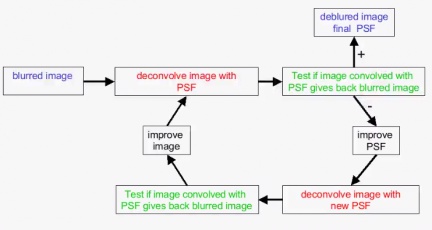
Figure 2: Schematic of the processes involved in blind deconvolution. The average number of iterations for a typical confocal microscope output is 10×.
Blind constrainediterative algorithms - so calledblind deconvolution - are currently the state of the art. They differ from the others in that the PSF is determined by an estimate based on microscope parameters and is adjusted during the iteration process. This fact facilitates the whole process and allows a wide range of users to obtain relevant results. Blind deconvolution is a very strong point of our solution - AutoQuant software.
The AutoQuant(Bitplane) deconvolution software has the following parameters:
- Flexibility to select different algorithms for a specific application.
- Very sophisticated algorithms forblinddeconvolution
- Intuitive and straightforward procedure with automatic metadata accuracy check
- Compatible with more than 20 formats from acquisition and analysis software
- Direct integration with Imaris image analysis software
- Online support, tutorials and webinars, application-specific guides
